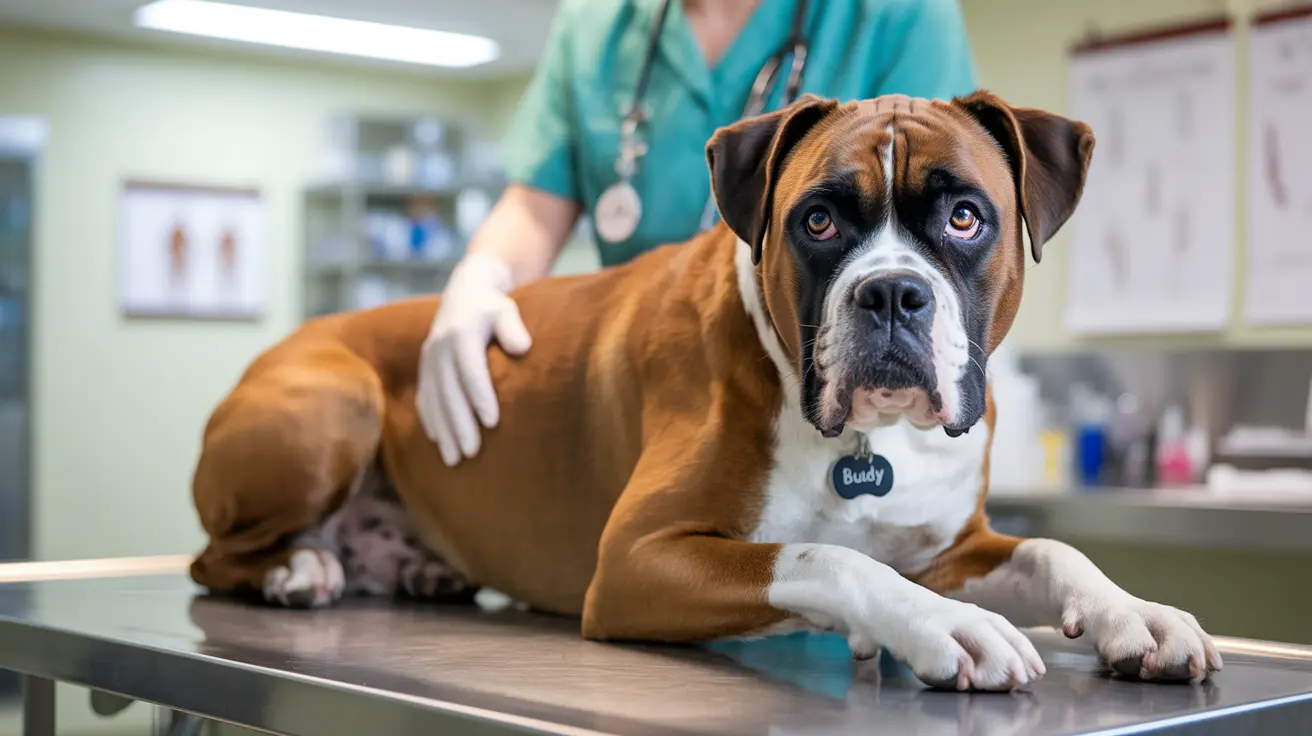Watching your dog collapse and go limp is a terrifying experience for any pet owner. This sudden and frightening event can signal various underlying health conditions, ranging from mild to life-threatening. Understanding the causes, recognizing warning signs, and knowing how to respond can make a crucial difference in your pet's outcome.
In this comprehensive guide, we'll explore why dogs collapse, what immediate actions you should take, and how to prevent future episodes. We'll also help you identify when a collapse requires emergency veterinary care.
Common Causes of Dog Collapse
Cardiovascular Issues
Heart problems are among the most frequent causes of sudden collapse in dogs. These can include:
- Arrhythmias (irregular heartbeats)
- Congestive heart failure
- Heart valve disease
- Pericardial effusion (fluid around the heart)
Neurological Conditions
Several neurological issues can cause a dog to collapse suddenly:
- Seizures
- Vestibular disease
- Brain tumors
- Stroke
- Narcolepsy
Metabolic and Internal Organ Problems
Internal system disruptions can lead to collapse:
- Hypoglycemia (low blood sugar)
- Addison's disease
- Liver or kidney failure
- Severe anemia
- Internal bleeding
Warning Signs Before Collapse
Dogs may show these symptoms before a collapse episode:
- Weakness or lethargy
- Difficulty breathing
- Stumbling or loss of coordination
- Excessive panting
- Pale or blue gums
- Disorientation
- Vomiting or diarrhea
Immediate Response to Dog Collapse
When your dog collapses, take these crucial steps:
- Stay calm and check for breathing
- Keep your dog lying down in a safe position
- Note the time and duration of the collapse
- Check gum color and capillary refill time
- Contact your veterinarian immediately
- Transport your pet carefully to the nearest emergency clinic
Prevention and Risk Factors
Several factors can increase the risk of collapse:
- Age (senior dogs are more susceptible)
- Breed predispositions
- Underlying health conditions
- Environmental factors like heat and exercise
- Toxin exposure
Preventive measures include:
- Regular veterinary check-ups
- Maintaining a healthy weight
- Avoiding strenuous exercise in extreme weather
- Managing existing health conditions
- Proper hydration
When to Seek Emergency Care
Seek immediate veterinary attention if:
- The collapse lasts more than a few minutes
- Your dog remains unresponsive
- Multiple episodes occur in one day
- Breathing difficulties are present
- Seizure activity is observed
- Gums are pale, blue, or white
Frequently Asked Questions
What should I do immediately if my dog suddenly collapses and goes limp?
First, ensure your dog is breathing and lying in a safe position. Keep them calm and quiet, note the time and symptoms, and contact your veterinarian immediately. Don't attempt to give food or water until cleared by a professional.
What are the most common medical causes of sudden collapse in dogs?
The most common causes include heart problems (such as arrhythmias or heart failure), neurological issues (like seizures), metabolic disorders (including low blood sugar), and heat exhaustion. Some breeds may also have genetic predispositions to collapse.
How can I tell if my dog's collapse is an emergency requiring urgent veterinary care?
Consider it an emergency if your dog remains unresponsive, has difficulty breathing, shows pale or blue gums, experiences multiple episodes, or exhibits seizure activity. Any collapse lasting more than a few minutes warrants immediate veterinary attention.
Can exercise or heatstroke cause my dog to collapse, and how can I prevent it?
Yes, both excessive exercise and heatstroke can cause collapse. Prevent these by avoiding strenuous activity during hot weather, ensuring proper hydration, and providing adequate rest periods during exercise. Some breeds are more susceptible to exercise-induced collapse.
What diagnostic tests will the veterinarian perform to find out why my dog collapsed and went limp?
Veterinarians typically perform physical examinations, blood tests, ECG (heart monitoring), chest X-rays, and possibly ultrasound or advanced imaging. They may also check blood pressure and oxygen levels to determine the underlying cause.
Conclusion
A dog collapsing is always cause for concern and requires prompt attention. By understanding the potential causes, recognizing warning signs, and knowing how to respond, you can better protect your pet's health. Remember that quick action and professional veterinary care are essential for the best possible outcome.






